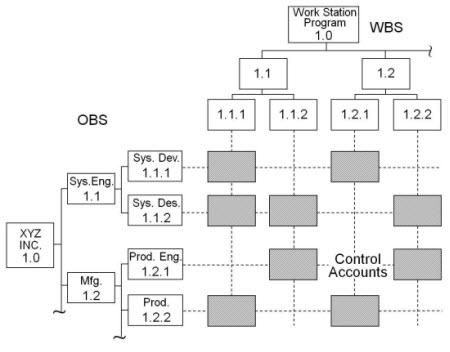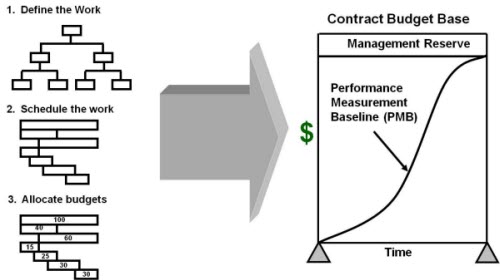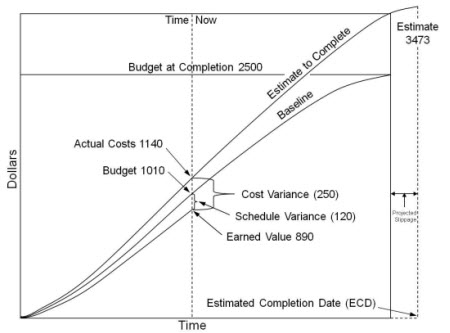In
the previous post We emphasized the value and importance of planning your
control system. In this post, we highlight some of powerful project control
techniques that you want to consider during your planning efforts and then
implement during the execution of your project.
Small work packages—This
was a point of emphasis during our discussion on building a WBS. If you recall,
there were two primary reasons for advocating small work packages: more
accurate estimates and better control. From a control perspective, if your work
packages are scheduled to complete within one (or at the most, two) reporting
periods, it is much easier to detect a delayed or troubled task. With earlier notice,
you are more likely to resolve the variance and protect the project’s critical
success factors.
Baselines—A
fundamental control principle is to manage to baseline.
First,
establish a baseline. This is generally applied to the critical success factors
of schedule and budget, but you can apply it equally as well to
product-oriented aspects of the project, especially requirements. Second,
measure and report performance against the baseline. Third, maintain the
baseline unless there is a formal agreement to reset the baseline.
Status meetings—The
simplest, and most widely known, technique is the status meeting. Consistent
and regular status meetings help to keep everyone honest, accountable, and on
their toes—especially if work assignments are small and have clear completion
criteria. In addition, status meetings are powerful tools for improving project
communications and managing expectations.
Completion criteria—This
starts during project definition with defining the acceptance criteria for the
project, and it continues for each deliverable and work assignment. Answer this
question in advance for each deliverable and work assignment: “How will we know
when it is done?”. Understanding the completion criteria upfront increases
productivity and avoids many of the issues associated with status reporting on
work tasks, especially the infamous “I’m 90% done” syndrome.
Reviews—Reviews are
a key technique for ensuring quality and managing expectations on project
deliverables, and they can take many forms. The principle here is to plan for
the review-feedback-correction cycle on most, if not all, of your key
deliverables. Common examples of reviews are process reviews, design reviews,
audits, walkthroughs, and testing. In addition, reviews can be combined with predefined
milestones and checkpoints.
Milestones and checkpoints—A
key feature of most proven project methodologies is the use of predefined
milestones and checkpoints. These markers are important points to stop, report
progress, review key issues, confirm that everyone is still on board, and
verify that the project should proceed with its mission. Besides being a
powerful expectations management tool, these predefined points allow project
sponsors and senior management to evaluate their project investments along the
way, and, if warranted, redirect valuable resources from a troubled project to
more promising pursuits.
Track requirements—A
simple, yet often neglected, technique to help control both scope and
expectations is the use of a requirements
traceability matrix. The
traceability matrix provides a documented link between the original set of
approved requirements, any interim deliverable, and the final work product.
This technique helps maintain the visibility of each original requirement and
provides a natural barrier for introducing any “new” feature along the way (or
at least provides a natural trigger to your change control system). In
addition, the trace matrix can link the specific test scenarios that are needed
to verify that each requirement is met.
Formal signoffs—Formal
signoffs are a key aspect of change control management, especially for
client-vendor oriented projects. The formal record of review and acceptance of
a given deliverable helps to keep expectations aligned and minimize potential
disputes. Most importantly, the use of a formal signoff acts as an extra
incentive to make sure the appropriate stakeholders are actively engaged in the
work of the project.
Independent QA auditor—The
use of an independent quality assurance auditor is another specific example of
the “review” technique mentioned earlier, and it’s often a component of project
quality assurance plans. In addition, the quality audit can be focused on
product deliverables, work processes, or project management activities. The
power of this technique is in establishing the quality criteria in advance and
in making the project accountable to an outside entity.
V method—The V method is a term used for a common validation and verification
approach that ensures that there is validation and verification step for every
deliverable and interim deliverable created. The left side of “V” notes each
targeted deliverable and the right side of the “V” lists the verification
method to be used for each deliverable directly across. The diagram shown below
helps illustrate this method.

Escalation thresholds—Escalation
thresholds sound much more ominous than what they actually are. The purpose of
escalation thresholds is to determine in advance what issues and variances the
project team can handle and what issues or variances demand attention by senior
management. Often, these thresholds are defined as percent variances around the
critical success factors. For example, if the cost variance is greater than 10%
or schedule variance is greater than 15%, engage senior management immediately
for corrective action steps. The key value of this technique is that it helps
define tolerance levels, set expectations, and clarifies when senior management
should get involved in corrective action procedures.
Performance
Reporting
Another
key aspect of project control is measuring and reporting project performance. if
you keep these following principles in mind, you can adapt your performance
reporting process to best meet the needs of your project environment:
Answer the big three questions—As a rule, key stakeholders want to know the answers to the
following three questions when reviewing project performance:
1. Where do we stand (in regard to the critical success factors)?
2. What variances exist, what caused them, and what are we doing
about them?
3. Has the forecast changed?
Measure from current baseline—If
you are going to report project performance with a variance focus, you must
establish and maintain your performance baselines. Any change to the
performance baselines is controlled via your change control procedures.
Think “visual”—Another
key concept in reporting is to think visually. Most people are visual and
spatial learners and will grasp the important project performance metrics more
quickly if they are presented in a visual format. The use of bar charts,
graphical schedule summaries, and stoplight indicators (red, yellow, and green)
for key metrics are good examples of this technique.
Think “summary page”—Along
this same theme, you generally want to provide your key status information in
no more than one to two pages. If it is appropriate to have details that will
take more than one or two pages, it is recommended that you provide a one
summary page upfront.
Highlight accomplishments—A
part of the status report’s function is to serve as a public relations tool for
the project, so make sure key accomplishments are highlighted prominently.
Show forecasts—In
addition to reporting how the project has performed to date, remember to show
the forecasted schedule and cost metrics. Often, this information is shown as
Estimated At Completion (EAC) and Estimated To Complete (ETC) figures.
Specifically, highlight any changes to these figures from the last reporting
period.
Highlight key issues, risks, and change requests—A natural category when assessing project performance. Make
sure any key issues, risks, and change requests are included on status reports.
Avoid surprises—An
important point about consistent, performance based
status
reporting is that stakeholders are aware and knowledgeable regarding overall
project status and are not caught off guard with project developments. To this
extent, depending on the audience for any status report, you might want to
communicate with specific stakeholders in advance of any official report
distribution. Always remember, don’t surprise anyone—especially your sponsors
and accountable senior management stakeholders.
Adapt to meet stakeholder needs—This is an example of the customer service orientation and
servant leadership qualities of effective project managers. Be prepared to
offer examples of performance reports that have worked well for you in the
past, but most importantly, go into any project looking to understand the
information needs for this given environment. Show enthusiasm and willingness
to adapt to the customer’s standards or to develop custom formats to best meet
the stakeholders’ needs.
Appropriate frequency—Consistent
with a management fundamental mentioned earlier, the frequency of performance
reporting needs to be appropriate for the project. The process of gathering
information and reporting performance needs to be quick enough and occur often
enough to be useful and relevant.
Variance Responses
As
we have mentioned, the first goal of our project control system is to prevent any
variance. However, we also realize variances and changes will occur—this is the
nature of the project beast. Thus, the remaining goals of project control are centred
on early detection and appropriate response. Let’s review the general response
options that are available to us (the project) when a variance occurs.
Take corrective actions—The
preferred option, whenever possible, is to understand the root cause of the
variance and then implement action steps to get the variance corrected. When
performance measurement is frequent, it is more likely that action can be taken
that will make a difference. Examples of corrective actions include adding
resources, changing the process, coaching individual performance, compressing
the schedule (fast tracking or crashing), or reducing scope (this would be
documented as a change request, too).
Ignore it—In
cases where the variance is small (and falls within an acceptable threshold
range), you might choose to take no action to resolve the deviation. Even in
these cases, it would be advisable to log the variance as a risk factor.
Cancel project—There
might be times when the appropriate response is to cancel the project
altogether. This response is more likely on projects where one or more key
assumptions have not held or when one or more of the critical success factors
has a very low tolerance for any deviations.
Reset baselines—While
taking corrective action is the preferred option for performance variances,
there are times when the variance cannot be eliminated. This is common on
knowledge-based projects and common on projects where the estimating
assumptions have not held. In these cases, a decision to reset the performance
baselines is made and approved. Then from this point on, performance is
measured from this revised baseline.








